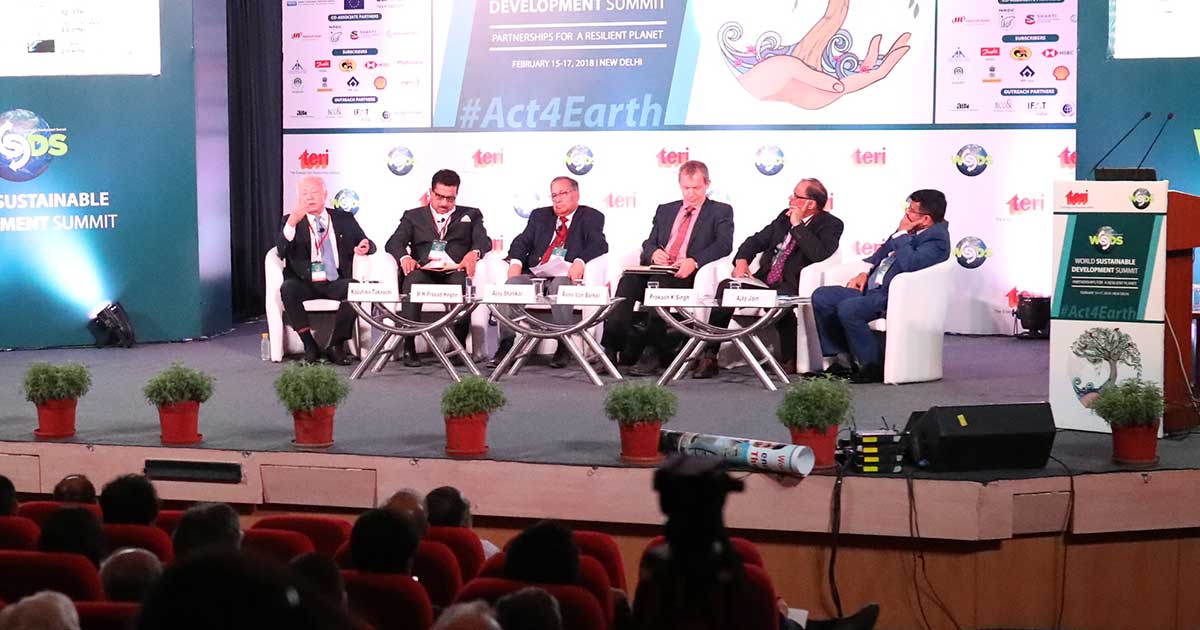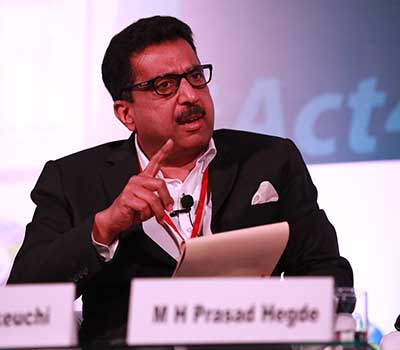
India is getting energy efficiency right
 The world is looking at India's energy efficiency experiments
The world is looking at India's energy efficiency experiments
"Energy efficiency is the cheapest way to achieve the Paris goals. Yet, it doesn’t see the pace of innovation experienced by other areas of energy transition," said Rachel Kyte, CEO Sustainable Energy for All (SEforALL) at the 'Energy Efficiency: Focus on Up-scaling’ session of the WSDS 2018. With only 12 years to go for the completion of the 2030 Sustainable Development Goals, the world should galvanize itself to pursue energy efficiency more comprehensively and consistently, to bring about a 'revolution.
"It must be the first order of business for all economies," she said, adding that India’s experiments in energy efficiency are something the world is looking at. India's energy efficiency imperatives have included industry, domestic sector, commercial sector, and agriculture. It has undertaken three pathways towards this goal: making energy efficient easier (in terms of cost), more effective, and making energy use efficient.
India: Energy Efficiency at Scale
Andhra Pradesh has decided to make energy efficiency a people's 'movement', with the government playing the lead role, said Mr Ajay Jain, Principal Secretary of Andhra Pradesh.
 India's energy efficiency moment
India's energy efficiency moment
Replacing the most inefficient appliance people used, the humble light bulb, with the most efficient alternative, the LED bulb, it was difficult given that LED bulbs once cost Rs. 400 a piece. The state partnered with Energy Efficiency Services Ltd (EESL), which offered a two-pronged strategy of upfront investment, and procurement tenders at the national level, driving down individual bulb prices to Rs. 40 today. Today, the state has replaced 22 million incandescent bulbs with LED variants. More importantly, this mass deployment has created a model to show that potential still exists, added Mr Jain. By the end of 2018, Andhra Pradesh will be completely lit by LED bulbs, given that the same approach is being applied for its street lighting programme. In the next five years, the EESL–Andhra Pradesh partnership also promises to completely phase out inefficient agriculture pumps for farming.
These initiatives have helped the state save an equivalent of $200 million in energy savings, with a World Bank recognition as India's best state in energy efficiency implementation, he revealed.
The state's new capital, Amravati, is being envisioned as a truly smart and energy efficient city. "We have tied up with world class consultants, and each building here will be energy efficient. Additionally, it has partnered with a company in Singapore to adopt district cooling for the city," he said.
India: Miles to go Before full EE
India still has miles to go in its bid to maximize the full potential of energy efficiency, explained Mr Hariprasad Hedge, Global Head – Operations, Wipro Ltd. Pulling up research data, he explained that while India's buildings systems have become 60%–70% more efficient, the net consumption of energy has remained flat. "This is a startling revelation, because despite energy efficient design, they don't yield commensurate outcomes," he said. Additionally, he explained how the share of energy efficiency initiatives in industries has progressed beyond the buildings sector. The same is the case with construction, which has lagged all other sectors in adoption of energy efficiency technology.
Considering that 70% of India is yet to be built, he said a mandate for efficiency can help India build more with less, thus, realizing the full potential of its anticipated Rs. 50 lakh crore infrastructure expenditure in the years to come.